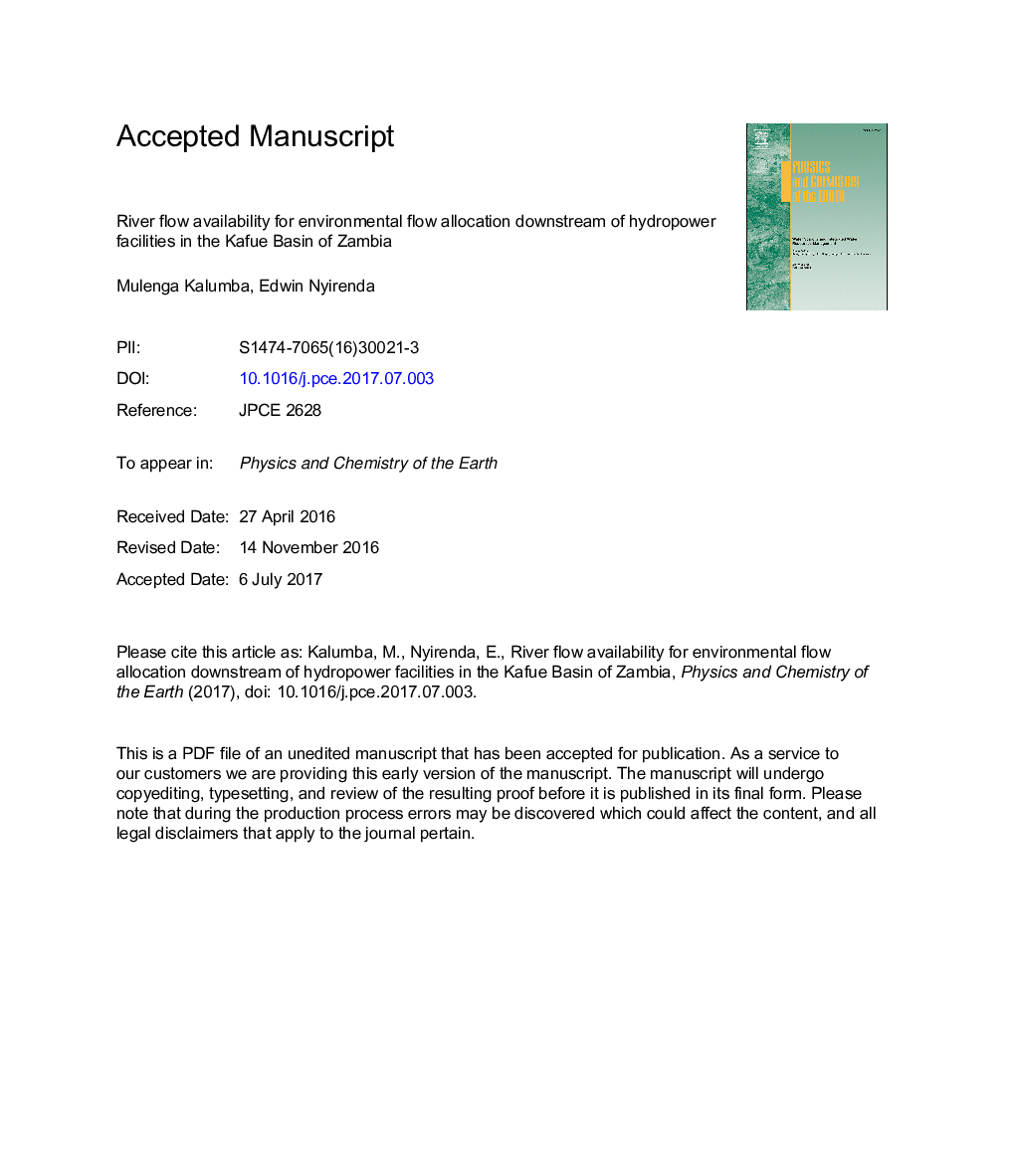| Article ID | Journal | Published Year | Pages | File Type |
|---|---|---|---|---|
| 8912415 | Physics and Chemistry of the Earth, Parts A/B/C | 2017 | 20 Pages |
Abstract
The Government of the Republic Zambia (GRZ) will install a new hydropower station Kafue Gorge Lower downstream of the existing Kafue Gorge Station (KGS) and plans to start operating the Itezhi-Tezhi (ITT) hydropower facility in the Kafue Basin. The Basin has significant biodiversity hot spots such as the Luangwa National park and Kafue Flats. It is described as a Man-Biosphere reserve and the National Park is a designated World Heritage Site hosting a variety of wildlife species. All these natural reserves demand special protection, and environmental flow requirements (e-flows) have been identified as a necessary need to preserve these ecosystems. Implementation of e-flows is therefore a priority as Zambia considers to install more hydropower facilities. However before allocation of e-flows, it is necessary to first assess the river flow available for allocation at existing hydropower stations in the Kafue Basin. The river flow availability in the basin was checked by assessing the variability in low and high flows since the timing, frequency and duration of extreme droughts and floods (caused by low and high flows) are all important hydrological characteristics of a flow regime that affects e-flows. The river flows for a 41 year monthly time series data (1973-2014) were used to extract independent low and high flows using the Water Engineering Time Series Processing Tool (WETSPRO). The low and high flows were used to construct cumulative frequency distribution curves that were compared and analysed to show their variation over a long period. A water balance of each hydropower station was used to check the river flow allocation aspect by comparing the calculated water balance outflow (river flow) with the observed river flow, the hydropower and consumptive water rights downstream of each hydropower station. In drought periods about 50-100Â m3/s of riverflow is available or discharged at both ITT and KGS stations while as in extreme flood events about 1300-1500Â m3/s of riverflow is available. There is river flow available in the wet and dry seasons for e-flow allocation at ITT. On average per month 25Â m3/s is allocated for e-flows at ITT for downstream purposes. On the other hand, it may be impossible to implement e-flows at KGS with the limited available outflow (river flow). The available river flow from ITT plays a very vital role in satisfying the current hydropower generating capacity at KGS. Therefore, the operations of KGS heavily depends on the available outflow (river flow) from ITT.
Keywords
Related Topics
Physical Sciences and Engineering
Earth and Planetary Sciences
Geochemistry and Petrology
Authors
Mulenga Kalumba, Edwin Nyirenda,
